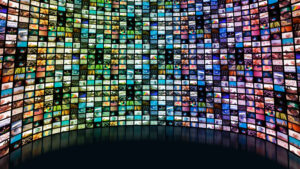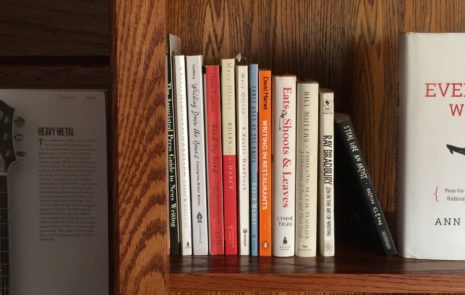
What do you want to be known for?
Here’s a hard question marketers need to ask: What’s the one thing your brand wants to be known for?
People will remember only one thing about you.
When I first ask marketers this question, most respond with a short list of attributes that make them different from competitors. Marketers want to be known for unique Product A, for origin story B, for deep experience in domain C, and for unique guarantee D.
Any one of these can be a good attribute. The problem is that no one will recall that many things about a brand. So, you’ve got to pick the one, most important thing to focus on.
Which one of these attributes do you want to be best known for? Which is most important to customers? Now, the trade-offs about your brand message get thorny.
Another way to pose the question is this: If people knew only one thing about your brand, what should it be?
Ideally, it would be:
- A benefit they gain from you, an answer to their question, What’s in it for me?
- Unique and differentiating, compared with competing brands.
- Emotional because people usually decide with their emotions first.
It’s tough to identify the one thing that’s beneficial, differentiating and emotional. Yet this is the key to your brand’s positioning. It’s one of the hardest nuts to crack in marketing.
The world’s top brands are built around the one idea that’s beneficial, differentiating and emotional to their customers. Examples of brands that rise to this challenge include Apple, Toyota and FedEx.
Apple puts people first to make life easier. Apple puts people’s needs before technology. It differentiates with simplicity. It evokes an emotional response: I love Apple. Apple is the #1 brand in the world, says Interbrand. Brand Finance reckons Apple’s brand value is more than half a trillion dollars.
The Toyota Prius hybrid makes drivers feel thrifty and eco-conscious: By getting over 50 miles per gallon, my Prius saves money and it’s better for the planet. Win-win. So I feel good about driving it. Plus, it’s way more convenient to refill than an EV! Interbrand ranks Toyota the #6 brand in the world, and the top automobile brand, worth $64.5 billion.
I feel absolutely confident shipping FedEx overnight. The benefit is clear: FedEx delivers quickest. Its origin story is that the company invented overnight delivery, and its system continues to differentiate FedEx. They’ve never lost a package I sent or received over the decades — so I feel absolute confidence about a package in their hands, even two days before Christmas. FedEx is the #82 brand in the world, valued at $8.5 billion by Interbrand.
What do people already know about you?
Chances are that people know either one thing about your brand, or nothing at all.
If people tune into your message, chances are they will recall one takeaway. Not two. Not three. Resist the temptation to add “another thing” to your brand message.
In fact, people tune out of thousands of brand messages every day. That’s how human brains protect themselves from being overwhelmed. People forget 90% of brand messages almost instantly.
You want your brand message to be among the figurative 10% that people remember. Ask yourself: what exactly do you want people to recall about your brand at decision time?
Kantar Millward Brown demonstrated the need to focus on one brand message by testing ads that carried one, two or three messages. Here’s what they found:

When an ad carries one message, 100% of the audience hears it. With one message, you are likeliest to break through to everyone in your audience.
When you convey two messages in one ad, one message reaches 65% and the other reaches 62% of your audience. So, each message loses one out of three people.
When you try to send three messages, you get diminishing returns. One message reaches 62%, the second reaches 43% and the third reaches only 30% of your audience. The more messages you send at once, the more they go astray.
So you can communicate three things poorly, or one thing well. As Marketing Week wrote, “Only bad marketers think more messages mean more effectiveness.”
Sending multiple messages overtaxes human brains. Three messages sent mean zero messages received.
You build credibility with consistency
That’s why it’s crucial to focus on the one thing people should know about your brand.
As Seth Godin says, “If you try to say three things, we will hear nothing. Because most of the time, we’re hardly listening.”
Put yourself in your customers’ shoes. How many screens can you see right now? Count them up. I see two – I’ll admit that’s a low number compared with my usual environment, and it’s because I’m on the road.

Many people can see three, four or more screens from where they sit most of the time. The sheer proliferation of screens reminds us why brands can afford to send only one message at a time.
Make sure the heart of your message gets remembered by customers. Limit yourself to one main message that you will communicate consistently.
That’s why we help clients build Message Maps around one central message. Everything else you say needs to directly connect to the heart of your message.
Repeat your main message frequently to let it sink in with your audience. It may take your message 3 times, 5 times, 7 times or more to break through to people.
Be persistent with one message, rather than trying to shepherd a whole flock of messages.
To help you zoom into your one message, convene a small team to co-create a Message Map.
Why co-create? Because all of us put together are consistently smarter than any of us working alone.
Sending one message consistently builds your credibility over time.
Discover the essence of your message with the co-creation approach, where everyone’s voice is heard. And you’ll find the one thing you want to be known for.
Related Posts
84 Questions to Spark Your Business Story
To ignite your story, start with the right questions When I work with clients to co-create their business story, we start with questions about customers...
How to Write Better Content Marketing in 12 Steps: Ann Handley
Note: This is a book review of the first edition of Everybody Writes by Ann Handley. Here’s our review of the new second edition.. Better...
How to get content marketing on mission, on strategy, on message and on time
What is the single most important content marketing decision you can make? To do successful content marketing, you need a content marketing editor with...
Media interview? Read these tips to be successful on the phone.
A media interview is a great way to get your company’s story heard. But in this day and age, with people scattered all over...





